Hotel Riu Plaza The Gresham Dublin, formerly known as The Gresham Hotel, is a historic four-star hotel located on O’Connell Street, one of Dublin’s main thoroughfares. Established in 1817, it has served as a key landmark in Dublin for over two centuries. The hotel has undergone several ownership changes and renovations throughout its history, reflecting the city’s evolving architectural and cultural landscape. Today, it operates under the management of the Spanish RIU Hotels & Resorts chain, which acquired it in 2016. The hotel’s prominent location and historical significance continue to make it a notable feature of Dublin’s urban fabric.
Contents
Early History and Foundation
Life Story of Thomas Gresham
Thomas Gresham, the founder of what is now known as Hotel Riu Plaza The Gresham Dublin, has a story marked by humble beginnings and remarkable ascension. A foundling, Gresham was abandoned as an infant on the steps of the Royal Exchange in London. Named after Sir Thomas Gresham, the founder of the Exchange and a prominent Elizabethan merchant, he was eventually brought to Dublin, Ireland. There, he secured a position in the household of William Beauman of Rutland Square (now Parnell Square), where he initially served as a butler. Over the years, his industry and thrift enabled him to gather the capital necessary to venture into his own business.
Establishment of the Hotel
In 1817, seizing the opportunity presented by the growth of Dublin as a commercial and aristocratic hub, particularly after the opening of Carlisle Bridge in 1794, Gresham purchased property at 21-22 Sackville Street (now O’Connell Street). Here, he established his hotel, which was strategically located in what was becoming the city’s fashionable and business district, replacing Capel Street in prominence.
Early Years of the Hotel
Originally, Gresham’s Hotel, as it was first known, was designed to provide the comforts of a commercial townhouse with facilities comparable to those found in private townhouses owned by families before the Act of Union. The hotel featured spacious drawing rooms, elegant staircases, and fires that burned continuously, creating a warm and inviting atmosphere for guests. It quickly became a fashionable destination for families and dignitaries visiting Dublin.
During its early years, the hotel catered mostly to wealthy aristocrats and Members of Parliament who were en route to or from London. This clientele helped establish the hotel’s reputation as a prestigious lodging in the heart of Dublin. The strategic location and high standards of hospitality under Thomas Gresham’s management also made it a central node in Dublin’s social scene, hosting various gatherings that included the city’s elite.
The original appearance of the hotel reflected the Georgian architectural style of the period, with a façade that blended seamlessly into the elegance of Sackville Street, making it an integral part of the city’s architectural heritage from its earliest days. This set the foundation for the Gresham Hotel’s long-standing status as a landmark in Dublin’s urban and social landscape.
19th Century Developments
Expansion of the Hotel
Throughout the 19th century, the Gresham Hotel underwent significant expansion and enhancements, reflecting both the personal success of its founder, Thomas Gresham, and the broader socio-economic changes in Dublin. After establishing the hotel in 1817, Gresham continued to acquire adjacent properties, allowing him to expand the hotel’s facilities and accommodate an increasing number of guests. The expansions were not only physical but also in the services offered, with the hotel gradually incorporating more luxurious and modern amenities.
Socio-Economic Factors Influencing Growth
The 19th century was a period of significant transformation for Dublin. The Act of Union in 1800 led to a shift in the city’s socio-political landscape, with many of the Irish aristocracy relocating to London but still requiring accommodation during their visits back to Dublin. Additionally, the industrial revolution and the expansion of the railway network made Dublin more accessible, increasing the number of business travelers and tourists to the city. The Gresham Hotel capitalized on these developments, positioning itself as a premier destination for both Irish and international visitors.
The hotel’s location on Sackville Street, renamed O’Connell Street in the later part of the century, placed it at the heart of Dublin’s main commercial and social activities, further enhancing its appeal to a high-profile clientele.
Notable Guests and Events
The Gresham Hotel hosted an array of distinguished guests and events during the 19th century, reflecting its status as one of Dublin’s most prestigious venues. Notable guests included political figures, members of the nobility, and leading intellectuals of the time. The hotel was known for its grand balls and social gatherings, which were significant events in Dublin’s social calendar, attended by the elite of Irish society.
Additionally, the hotel played host to various political and cultural discussions, becoming a hub for significant conversations that shaped the intellectual and political climate of the era. This role was facilitated by the hotel’s reputation for discretion and excellent service, making it a preferred venue for private meetings and diplomatic engagements.
The Irish Civil War and Reconstruction
Damage During the Irish Civil War
The Gresham Hotel experienced significant damage during the Irish Civil War, a tumultuous period that left deep scars across Dublin and its landmarks. In July 1922, the hotel found itself in the crossfire when anti-Treaty forces used it as a stronghold. The strategic location of the hotel on O’Connell Street made it a focal point in the conflict, leading to severe structural damage when it was bombarded during the fighting. This period marked one of the darkest chapters in the hotel’s history, as it not only suffered physical damage but also a temporary loss of its status as a premier hospitality destination in Dublin.
Reconstruction Efforts
Following the end of the Civil War, the ownership of the Gresham Hotel embarked on an ambitious reconstruction project to restore the hotel to its former glory and modernize its facilities. In 1925, significant funds were allocated for this purpose, including a government compensation award which helped finance the rebuilding efforts. The hotel’s reconstruction was led by the renowned British architect Robert Atkinson, known for his work in the Art Deco style.
Architectural Details of the Rebuilding
Robert Atkinson’s redesign of the Gresham Hotel introduced a modern aesthetic that blended classical elements with the then-fashionable Art Deco style. The new building featured a striking façade characterized by clean lines, geometric patterns, and elegant detailing that echoed the opulence and glamour of the era. Notable architectural features included:
- Façade: The front of the hotel was designed with Portland stone, featuring a series of vertical and horizontal lines that emphasized its height and grandeur. The entrance was made prominent by an ornate canopy and detailed stonework around the windows and doors.
- Interiors: The interior spaces were lavishly decorated, with an emphasis on luxury and comfort. The use of rich materials such as marble, brass, and velvet, along with custom-designed furniture and fixtures, reflected the Art Deco influence.
- Decorative Elements: The hotel boasted intricate decorative plasterwork, bespoke light fixtures, and stylized motifs consistent with Art Deco aesthetics. These elements were seen in the public areas and extended into the private rooms and suites.
The reconstruction of the Gresham Hotel not only restored its physical structure but also rejuvenated its reputation as a leading hotel in Dublin. The new design made a bold statement of resilience and renewal, helping the hotel to regain its place as a key player in Dublin’s social and economic life. The Art Deco styling of the building subsequently became an iconic aspect of O’Connell Street’s architectural landscape, admired for its elegance and historical significance.
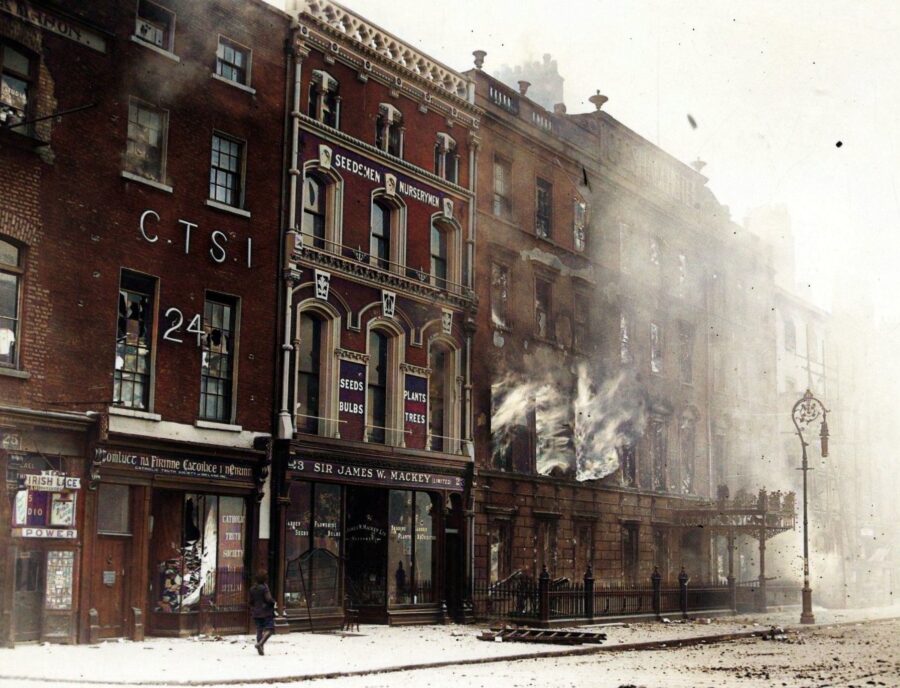
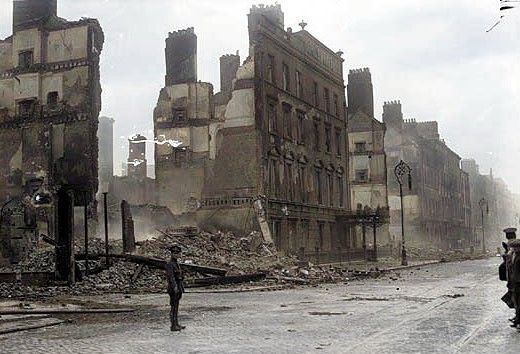
Mid-20th Century Innovations and Social Significance
Management Changes and Innovations
During the mid-20th century, the Gresham Hotel saw several changes in management, each bringing their own innovations and styles to the operation and ethos of the hotel. In the early 1940s, Timothy ‘Toddy’ O’Sullivan took over as manager. O’Sullivan was notable for his dynamic management style and keen business acumen, which he used to navigate the challenges of wartime rationing and restrictions. He was instrumental in modernizing the hotel’s operations, emphasizing efficiency and high-quality service.
O’Sullivan’s tenure also saw the introduction of modern amenities that were relatively new to Irish hotels at the time, such as in-room telephones and central heating, which significantly enhanced guest comfort and positioned the Gresham as a leader in the hospitality industry in Ireland. His approach to management included building extensions and continuously improving the hotel’s facilities, anticipating a post-war boom in tourism.
Adaptation to Modern Amenities
Under successive managements, the Gresham Hotel continued to adopt modern amenities to keep pace with international standards. This included the installation of private bathrooms in more rooms, a move influenced by American hotel standards, which prioritized comfort and privacy. The hotel also introduced central heating and hot and cold water in every bedroom—luxuries that were not common in all hotels of the time.
These upgrades played a crucial role in maintaining the hotel’s reputation for luxury and comfort, ensuring it remained competitive and appealing to both new and returning guests. Additionally, the hotel’s ballroom and dining facilities were upgraded to accommodate large events, making it a popular venue for balls, weddings, and other significant social gatherings.
Popularity Among Celebrities and Political Figures
The Gresham Hotel’s prime location and reputation for luxury attracted numerous celebrities and political figures throughout the mid-20th century. Its guests included Hollywood stars like John Wayne, Elizabeth Taylor, and James Stewart, as well as political dignitaries visiting Dublin. The hotel’s ability to provide a high level of service and discretion made it a favorite among such high-profile visitors.
Moreover, the hotel often hosted press conferences and meetings that were significant in the political and cultural spheres of Ireland and beyond. Its function rooms became venues for discussions and decisions that influenced various aspects of Irish public life.
Recent History and Modern Era
Acquisition and Renovations
The late 20th century saw the Gresham Hotel become part of the Ryan Hotel Group in 1978, a significant shift that marked the beginning of a new era of modernization and expansion. This period was characterized by substantial investments aimed at updating the aging infrastructure and revitalizing the hotel’s grandeur to meet contemporary standards. The Ryan Group initiated several renovations that improved facilities and modernized guest rooms, ensuring the hotel’s competitive edge in the hospitality market.
In 2016, a major transition occurred when the hotel was sold to the Spanish RIU Hotels & Resorts chain for €92 million. This acquisition by RIU marked a new phase of international branding and further modernization. The new ownership maintained the hotel’s historic charm while introducing modern luxuries and amenities expected by international travelers. The renovation under RIU included refurbishing the hotel’s 288 rooms and public areas to enhance comfort and style, blending historical elements with contemporary design.
Current Features of the Hotel
Today, the Hotel Riu Plaza The Gresham Dublin boasts a variety of modern amenities while still retaining its historical character. Guest rooms are equipped with state-of-the-art features including high-speed internet, luxury bedding, and modern bathroom facilities. The hotel also preserves historical elements such as Waterford crystal chandeliers and the original Georgian architecture, offering guests a unique blend of old-world charm and modern comfort.
Cultural Impact
Inclusion in Literature
The Gresham Hotel’s cultural significance is perhaps best immortalized in James Joyce’s short story “The Dead,” which is part of his collection “Dubliners.” In this story, the hotel serves as the setting for the poignant revelation scene, adding a layer of literary heritage to its historical and cultural identity. The mention in Joyce’s celebrated work has attracted literary enthusiasts to the hotel, eager to experience the setting of one of Ireland’s most famous literary works.
Role in Dublin’s Cultural and Social Life
Throughout the decades, the Gresham Hotel has played a pivotal role in Dublin’s cultural and social scenes. It has been a venue for significant events, including balls, galas, and high-profile gatherings that have been integral to Dublin’s social calendar. The hotel’s central location on O’Connell Street has made it a landmark and a meeting point for various cultural activities in the city.
The hotel has also served as a backdrop for numerous film and television productions, further embedding it in the cultural fabric of the city. Its ability to represent both historical and contemporary Dublin has made the Gresham a symbol of the city’s evolving identity.
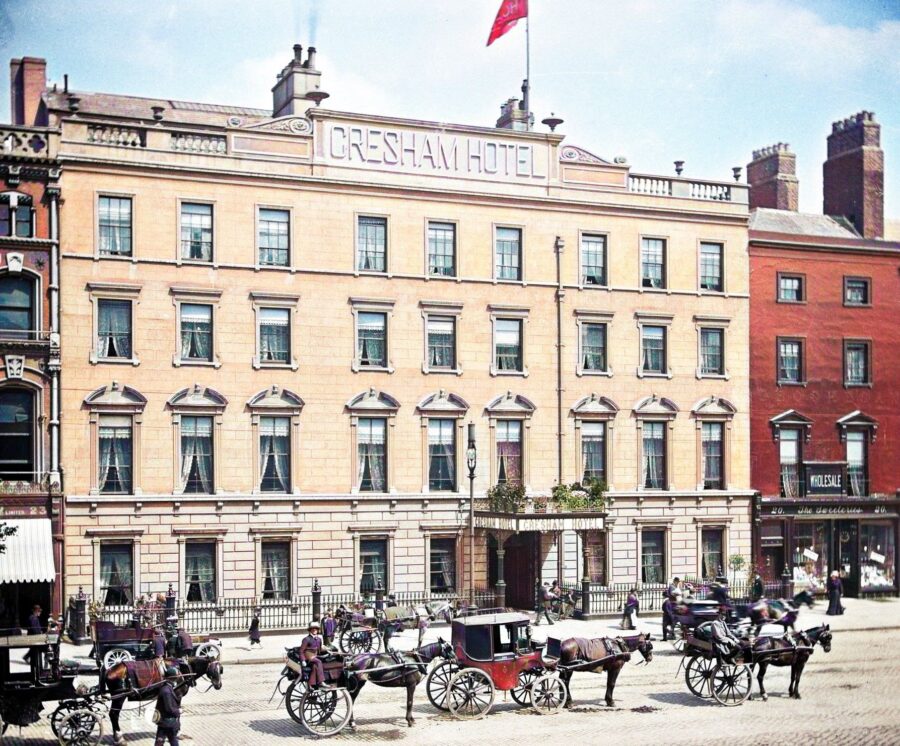


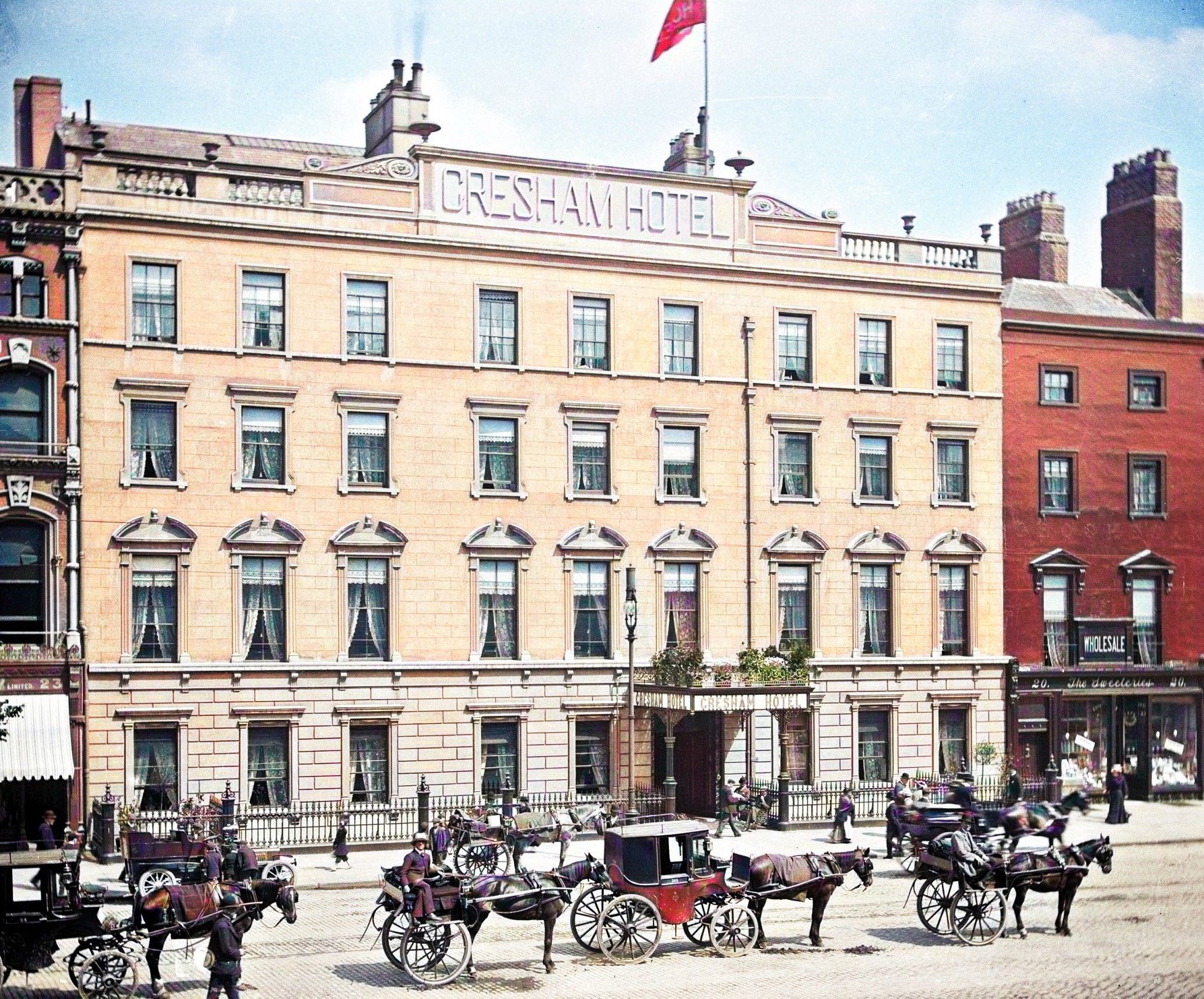
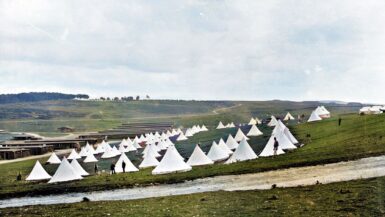
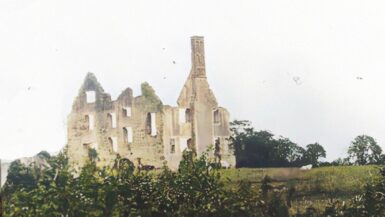
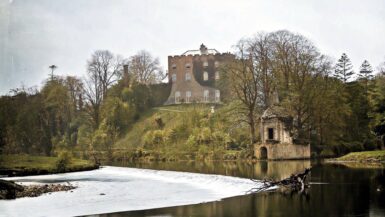
Leave a reply